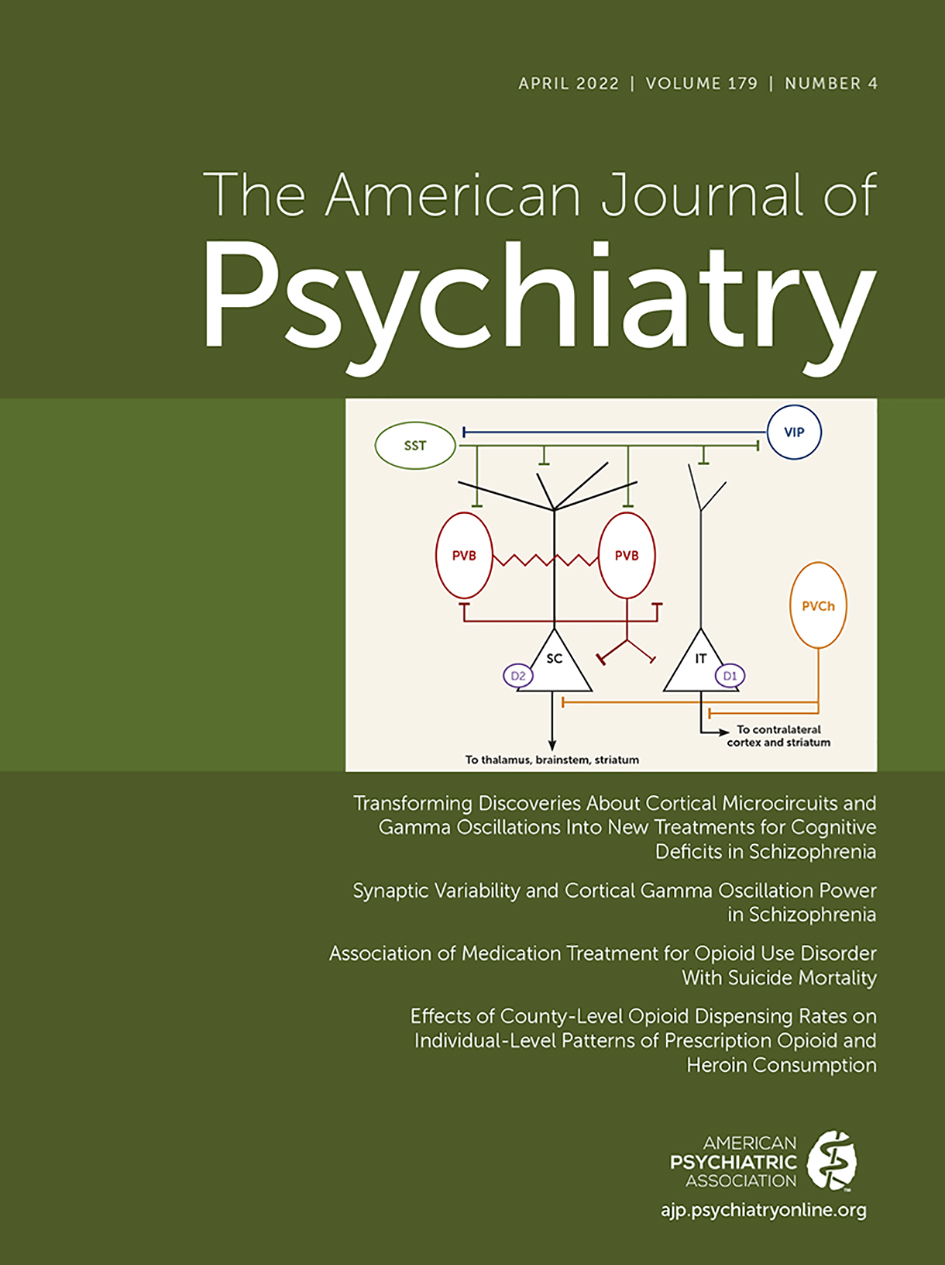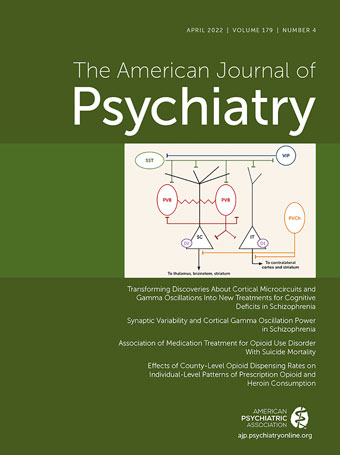Integrating Clinical and Basic Research: Opioid Use Disorder, Psychotic Illnesses, and Prefrontal Microcircuits Relevant to Schizophrenia
Understanding Prefrontal Cortical Microcircuitry in Relation to Psychopathology
Postmortem Brain Studies Reveal Prefrontal Synaptic Alterations Relevant to Reduced Gamma Oscillation Power and Working Memory in Schizophrenia
Associations Between Duration of Untreated Psychosis and 20-Year Outcomes
Decreased Suicide Risk Related to Medication Treatment for Opioid Use Disorder
Relations Between Opiate Prescription Dispensing Rates With Prescription-Related Opiate Misuse and Heroin Use
Conclusions
References
Information & Authors
Information
Published In
History
Keywords
Authors
Funding Information
Metrics & Citations
Metrics
Citations
Export Citations
If you have the appropriate software installed, you can download article citation data to the citation manager of your choice. Simply select your manager software from the list below and click Download.
For more information or tips please see 'Downloading to a citation manager' in the Help menu.
View Options
View options
PDF/EPUB
View PDF/EPUBLogin options
Already a subscriber? Access your subscription through your login credentials or your institution for full access to this article.
Personal login Institutional Login Open Athens loginNot a subscriber?
PsychiatryOnline subscription options offer access to the DSM-5-TR® library, books, journals, CME, and patient resources. This all-in-one virtual library provides psychiatrists and mental health professionals with key resources for diagnosis, treatment, research, and professional development.
Need more help? PsychiatryOnline Customer Service may be reached by emailing [email protected] or by calling 800-368-5777 (in the U.S.) or 703-907-7322 (outside the U.S.).

